SSZT433 June 2019 AWR1642 , AWR1843
In my previous article, I introduced the use of TI’s 77-GHz millimeter wave (mmWave) sensors for interior sensing applications like child presence detection, passenger detection and intruder detection.
The need for child presence detection has found its place on the EURO NCAP roadmap, driving car manufacturers to offer this feature. Adding child presence detection functionality improves a car’s overall safety rating, by helping solve the problem of identifying children left in cars and alerting drivers. Car manufacturers can use TI mmWave technology to design child presence detection systems and additional capabilities such as detecting occupant vital signs to monitor driver health, deploy airbags in the event of a vehicle crash, alert passengers to use seat belts and more – all while maintaining occupant privacy by not relying on cameras for presence detection.
Our portfolio of mmWave devices can help address these applications at a low-cost price point while offering high performance. For applications that require higher resolution, such as detecting the posture of a passenger or driver, imaging radar using mmWave sensors provides high-resolution occupant detection.
These test scenarios demonstrate how car interior sensing works using an mmWave sensor.
Using TI mmWave Sensors for Heart-rate Monitoring
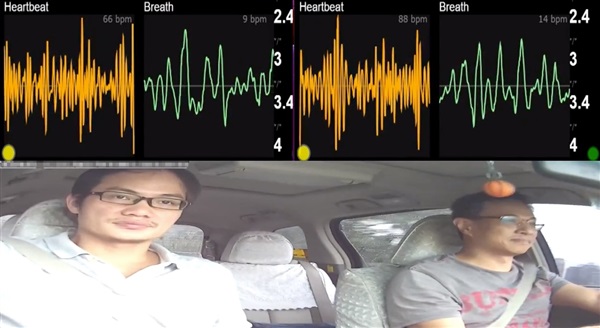 Figure 1 Detecting Driver and Passenger
Vital Signs Using the TI AWR1642 Sensor in a Moving Car (Image Source: AV
Design Solution Corp)
Figure 1 Detecting Driver and Passenger
Vital Signs Using the TI AWR1642 Sensor in a Moving Car (Image Source: AV
Design Solution Corp)In the second example, illustrated in Figure 2, we again used the AWR1642 sensor to demonstrate occupancy detection and vital-sign monitoring of each of the occupants. The sensor is mounted above the rearview mirror and has two transmitters and four receivers. The AWR1843 device, which has three transmitters, four receivers and more memory, enables additional features beyond occupant detection, like basic classification of occupants as an adult or child.
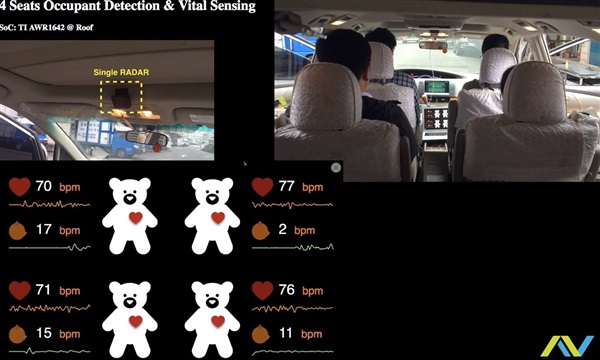 Figure 2 Occupant Detection and
Vital-sign Monitoring of Four Occupants inside a Car Using the AWR1642 Single
Chip Sensor Mounted above the Rearview Mirror (Image Source: AV Design
Solution Corp)
Figure 2 Occupant Detection and
Vital-sign Monitoring of Four Occupants inside a Car Using the AWR1642 Single
Chip Sensor Mounted above the Rearview Mirror (Image Source: AV Design
Solution Corp)Distinguishing Occupants Using Radar
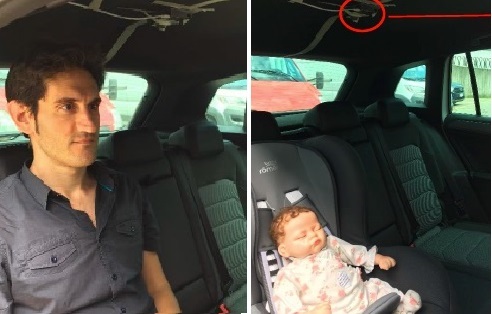 Figure 3 Detecting and Distinguishing
between an Adult and Child Occupant Using the AWR1843 Sensor Mounted on the
Ceiling (Image Source: Azcom Technology)
Figure 3 Detecting and Distinguishing
between an Adult and Child Occupant Using the AWR1843 Sensor Mounted on the
Ceiling (Image Source: Azcom Technology) Figure 4 The Output of the AWR1843
Single Chip Sensor Classifier as an Adult or a Child Based on a Probability
Percentage Which Is More than 98% Accurate from Initial Tests (Image
Source: AV Design Solution Corp
Figure 4 The Output of the AWR1843
Single Chip Sensor Classifier as an Adult or a Child Based on a Probability
Percentage Which Is More than 98% Accurate from Initial Tests (Image
Source: AV Design Solution CorpIn-cabin Sensing Using Imaging Radar
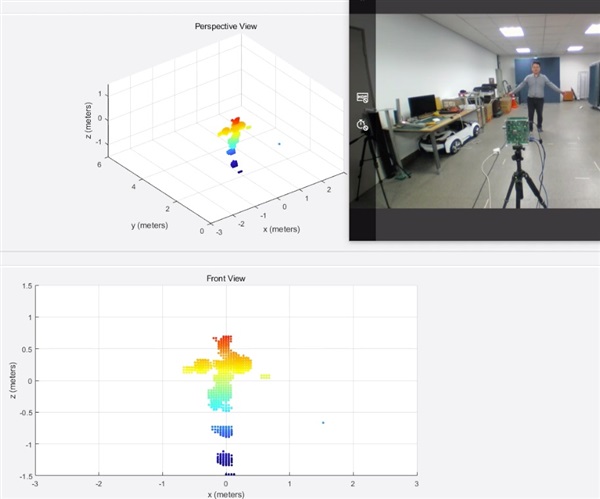 Figure 5 An Imaging Radar Test Setup,
with a Person Standing in Front of the Imaging Radar Module (a); and a
Point-cloud Representation of This Person, with Various Colors Used to Indicate
Height (b) (Image Source: Smart Radar Systems)
Figure 5 An Imaging Radar Test Setup,
with a Person Standing in Front of the Imaging Radar Module (a); and a
Point-cloud Representation of This Person, with Various Colors Used to Indicate
Height (b) (Image Source: Smart Radar Systems)Figure 6 and Figure 7 demonstrate passenger occupancy detection in an SUV-like setup with seven seats. The imaging radar evaluation module is facing downwards, similar to a ceiling position. The radar sensor detects all six passengers in the vehicle accurately. The imaging radar also clearly identifies the empty seat between the other two seats in the back row.
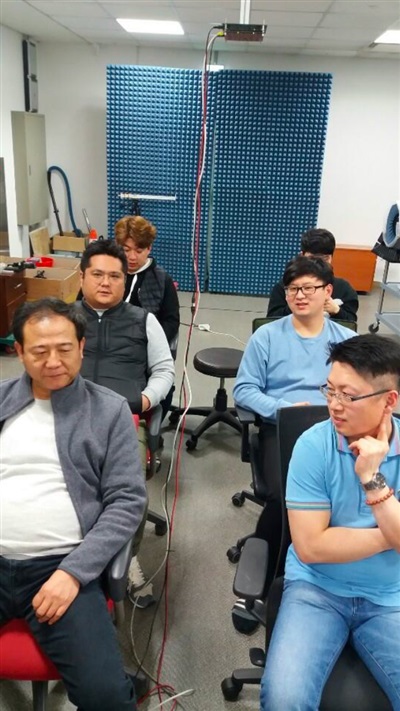 Figure 6 Lab demonstration showing the
detection of all passengers in a car-like setup using TI imaging radar.
Figure 6 Lab demonstration showing the
detection of all passengers in a car-like setup using TI imaging radar.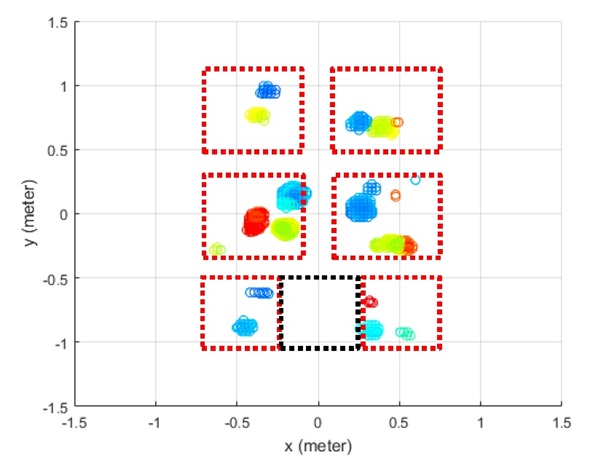 Figure 7 Lab demonstration output where
the red boxes indicate an occupied seat, while a black box indicates an empty
seat. (Image Source: Smart Radar Systems)
Figure 7 Lab demonstration output where
the red boxes indicate an occupied seat, while a black box indicates an empty
seat. (Image Source: Smart Radar Systems)The Benefits of Interior Sensing Solutions with TI mmWave Sensors
In addition, sensor reliability is extremely important for occupant detection. TI mmWave sensors are Automotive Electronics Council-Q100 qualified and TI mmWave sensors help automotive designers achieve Automotive Safety Integrity Level (ASIL)-B requirements for interior sensing systems.
A final, important aspect of a TI mmWave sensor design process is our software, which makes the design scalable and easier at the same time. The mmWave-SDK contains the same drivers and API’s for all of our single chip sensors and imaging radar. We also provide several reference designs and examples to start your design.